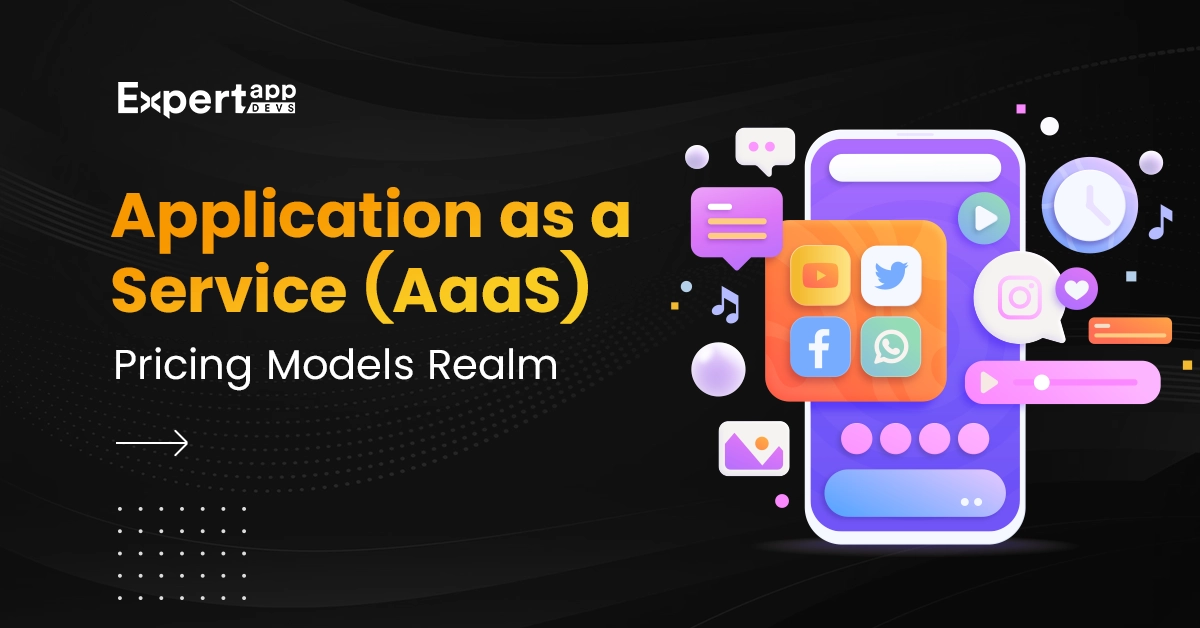Unravelling the AaaS Pricing Realm: Strategies, Templates and Real-world Examples
Are you struggling to stay agile while reducing the cost overheads or expenditures? Does the traditional application delivery system call for extensive infrastructure and software licenses? Do you struggle to maintain the applications and scale them to meet your new demands?
It’s time to embrace Application-as-a-Service (AaaS) for your business. With a heavy investment in security and on-demand application delivery, it reduces cost and effort. Additionally, it can also handle geographical constraints, enabling seamless access.
While SaaS and AaaS are used interchangeably, there are some subtle differences between the two. SaaS offers fully functional applications, while AaaS offers specific components or functionality on-demand. SaaS targets specific business units in a business while, AaaS targets a broader audience such as developers, data scientists and others.
Pricing is a major aspect that differentiates the AaaS model from others. This article will explore the AaaS pricing in detail and understand the way it works.
AaaS Pricing Models
The Application as a Service offers diverse pricing models that can help you make your business sustainable and profitable.
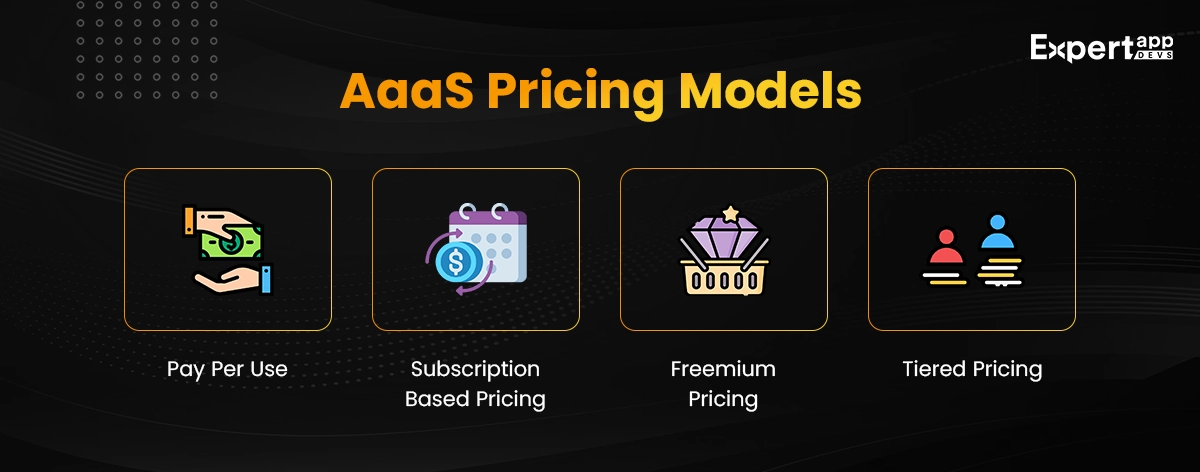
#1. Pay Per Use
This is a perfect model if your usage is restricted. You will pay for the application features or resources you plan to use. This means you can budget your fluctuating needs and manage your unpredictable requirements easily.
It can prevent you from overspending and overcommitting the resources for the application.
|
Pros |
Cons |
|
This is a cost-efficient model that meets the fluctuating user demands. |
Usages are unpredictable, which makes budgeting a challenge. |
|
Can be scaled to meet the increasing or decreasing usage without committing to a fixed budget. |
You may not be able to predict the usage patterns, which can make planning difficult. |
|
Extends flexibility to allow usage as per the needs for better control of expenses. |
You must track the usage effectively to maintain the costs. The tracking is complex. |
|
Reduces the barrier to entry with lowered costs for a wider adoption. |
|
|
Provides transparency to the users as they can check and understand the usage better. |
#2. Subscription-Based Pricing
You choose one of the pricing plans offered for the subscription and subscribe to the service. You can pay for the whole application either monthly or annually.
This can help you predict the amount you pay the customers or providers. It can help plan your budget. You can also upgrade your plan as per your needs.
|
Pros |
Cons |
|
You can enjoy a predictable revenue stream with this pricing model. |
There is a vendor lockin that customers experience when using subscription services. |
|
Your user can access the services continuously. Additionally, the updates will ensure better retention. |
There is an upfront commitment that users need to go through when adopting the subscription models. |
|
Subscription services allow you to save more money than pay-per-use models. This comes from the discounts you get with these models. |
The customers may need to pay for the features they may not be using. |
|
The customers can predict the expenses and accordingly manage the budget. |
There is a high churn that businesses experience during renewals. |
#3 Freemium Pricing
Freemium is a great pricing model if you want the users to try the software before they purchase it. This allows you to use the application for free till you are satisfied.
Once you have used the core functionality, you can proceed to the higher model. Freemium is a great way to upsell the software solution. It also helps you retain your customers.
|
Pros |
Cons |
|
The freemium pricing model experiences a low barrier to entry as the users can try before they buy. |
The free version restricts the usage of the application as there are fewer features available. |
|
You can acquire users via the free version to improve visibility and reach. |
It is a major challenge for businesses to convert their free users into paid customers. |
|
It helps you create a competitive edge and unique selling point for the business. |
You need to allocate resources for the free version to engage them and help them convert into pain customers. |
|
The trial period is a great way to encourage users to buy the product. |
#4 Tiered Pricing
Tiered pricing depends entirely on access and service levels. The features and functionality differ according to the tiers. Tiered pricing can help you scale based on usage. Additionally, it can ensure you invest in the application according to your needs. This model facilitates flexibility and customization.
|
Pros |
Cons |
|
There are various service levels and features available that match the diverse needs and budgets. |
This pricing model is highly complex. You must consider all the feature differentiations before implementing the pricing. |
|
You can easily scale the application to meet your evolving needs. |
The diverse pricing tiers can lead to decision paralysis. |
|
You can use value-based pricing that can help you attract several segments. This will help enhance the perceived value of the product. |
Factors Influencing the AaaS Pricing
There are diverse factors to consider when planning the AaaS pricing strategy. This will help you ensure the apt pricing for the application, is in sync with the users.
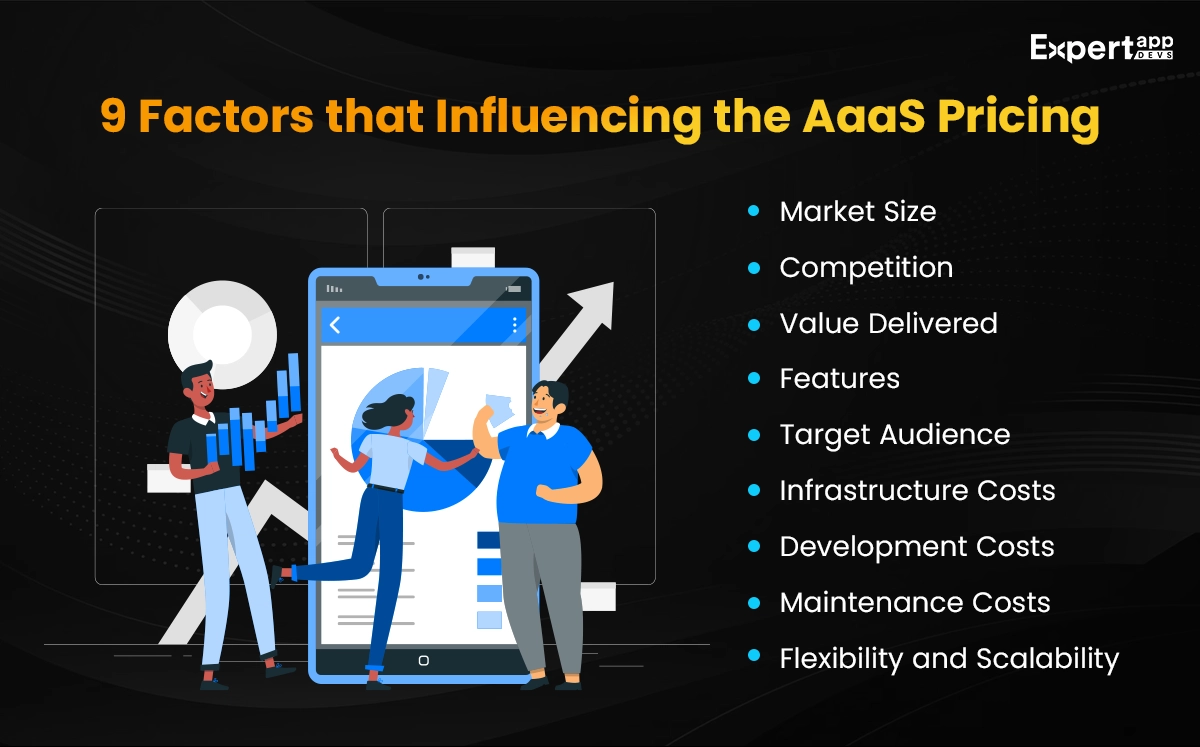
#1. Market Size
When you are operating in a large market, you can lower the price. This can align with the economies of scale. Niche markets are slightly different. There you will need to ensure specialized prices to meet the specific offerings.
When you are part of a growing market, you may experience higher demand. At this point, you might want to increase the pricing or offer segmented pricing. This would help you stay relevant.
The pricing completely depends on the type and size of the market. Pricing models in a mature market are different from the growing ones.
#2. Competition
The competition can also cause pricing wars. You will notice that the prices evolve and profit margins change according to the competition.
If you have a unique feature that makes you different from others in the competition, you can offer premium pricing. However, if you are almost the same as others in the market, you might want to consider the competition’s pricing.
The positioning of your product influences your pricing and budgeting. You might also want to segment the customers to determine the pricing.
#3. Value Delivered
The value perceived by the users also contributes to the pricing. You must consider all factors including cost savings, revenue and efficiency gains while determining the pricing.
Make sure to add a tangible return on the investment while planning the pricing tier. If the user feels the perceived value is high, they will be ready to pay a premium for the product.
#4. Features
The features you are proposing can also help you define the pricing tiers for your application. Depending on the features you are incorporating and the value, you can choose to define the pricing.
You can also cap the different add-ons and features separately. The idea is to ensure that the feature is in sync with the pricing you are offering your customers.
#5. Target Audience
The customer segments come with diverse requirements. You can segment them and define the application to meet their requirements.
You can use the value perception and requirements to tailor the pricing of the application. You must ideally know the pain points and the target audience needs to define the models. By segmenting the customers, you can find the ideal pricing strategy for your needs.
#6. Infrastructure Costs
The infrastructure complexity and size also influence the AaaS pricing. This will decide the amount of bandwidth you need to deliver the application as a service to your users.
You may need a reliable and secure infrastructure to manage your application services. Moreover, you need to plan resource allocation for efficient management. These costs can help you determine the pricing for the AaaS.
#7. Development Costs
Your investment in planning and developing the application can also determine the pricing model. You must take into consideration everything, from technology to research, as it can impact the pricing decisions.
If you have included innovative and proprietary technologies, you must take note of that while planning the pricing model.
#8. Maintenance Costs
You must consider the support and maintenance costs while planning the pricing model for the AaaS. You must invest in proactive solutions such as continuous monitoring and troubleshooting. This can also reduce downtime and ensure proper pricing schedules.
You can also use proper contract and service level agreements to manage the maintenance and support costs. This would help you price the application accordingly.
#9. Flexibility and Scalability
You must cater to diverse customer requirements, such as flexible usage (pay-per-use and tiered pricing). You should also facilitate scalability while planning the AaaS.
By striking a balance between flexibility and scalability, you can announce the perfect pricing model.
Common Challenges with the AaaS Pricing Model
Let’s look at some of the common challenges you may face while planning the pricing model for AaaS.
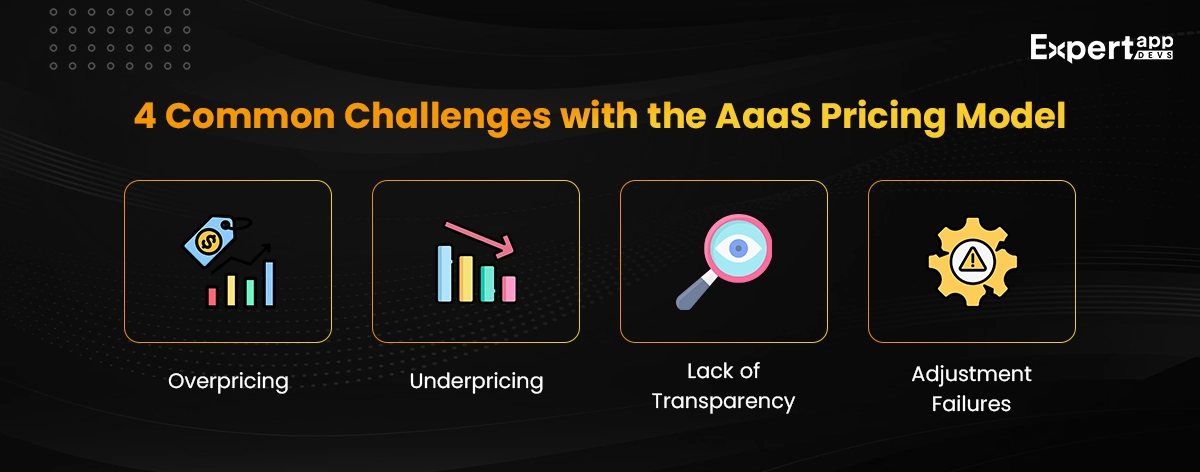
#1. Overpricing
Overpricing is one of the biggest setbacks when planning the AaaS pricing model. You tend to set the prices slightly higher than the perceived value. This can hit you back with resistance that in turn calls for increased losses and customer churn.
You might notice that the demand and revenue from the application is less in this case.
#2. Underpricing
You may price the application less than it deserves. This means you undervalue the application than it should be.
This makes you lose incredible opportunities for conversion. You may not be able to enjoy a sustainable revenue model as a result.
Underpricing may cause profitability issues. It can also impact the brand perception negatively.
#3. Lack of Transparency
When you aren’t transparent about the pricing, it can impact your revenue and conversion opportunities. You might notice that hidden fees or complex estimates can be a trust killer. It can also dampen your brand’s image.
#4. Adjustment Failures
When you don’t allow your pricing strategy to evolve with the changing customer demands or competition needs, you tend to cause stagnation. You must ensure the cost, value proposition and other factors are correctly recognized to ensure pricing adjustment.
AaaS Pricing Strategy
Here are all the things to consider when planning the pricing strategy for your application.
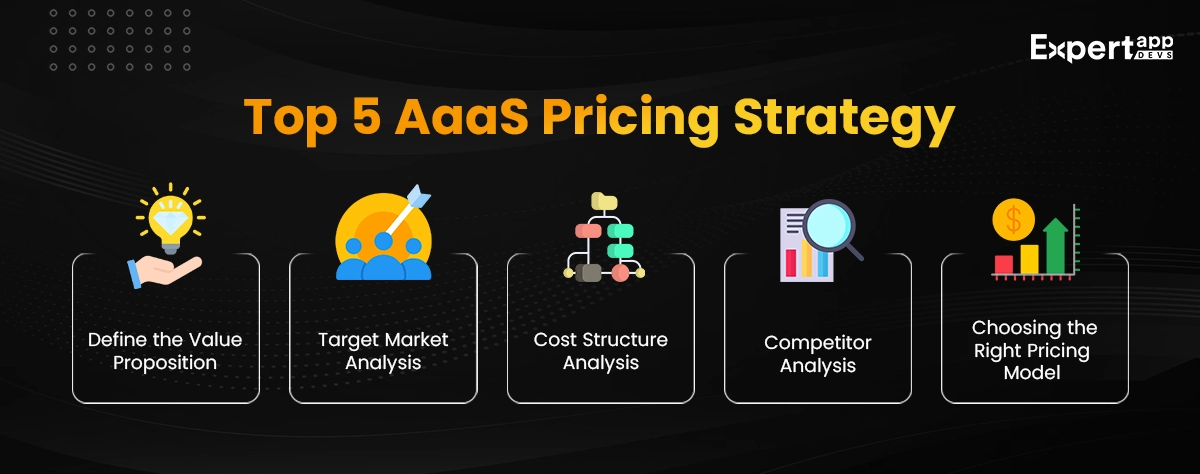
#1. Define the Value Proposition
The first part of defining the pricing for your AaaS is to define the value proposition. It can help you identify the benefits and value of your application. Moreover, you can determine the efficiency gains and performance of the application.
The value proposition should be in sync with the customer’s expectations. This would help you plan the best pricing model.
#2. Target Market Analysis
You must conduct detailed research on the target market to understand their needs and preferences. This would also help you understand the behaviour and purchase patterns. You would know how much the user is ready to pay to use the software. This would also help you plan the pricing model for the application.
#3. Cost Structure Analysis
You must determine the cost structure while identifying the pricing model. Include infrastructure, development and overhead costs. These costs can also help you get the benchmark price for the software. Moreover, it can help you plan the profit margins for the application.
#4. Competitor Analysis
You must assess the competition to understand the value they are offering for the AaaS solutions. This would help you understand the appropriate pricing models and pricing tiers. This would also help you plan the differentiation model for your AaaS.
#5. Choosing the Right Pricing Model
The right pricing model can make it easier for the target market to adopt the AaaS. The cost structure with the value proposition can help you plan the pricing model. Moreover, you must look at the profit and revenue generation while defining the pricing.
AaaS Pricing Template
The pricing template is an important part of the pricing strategy. You can use the template to guide through the cost analysis, assess competition and create pricing tiers.
Here are all the template components you must know before using it to plan the model.
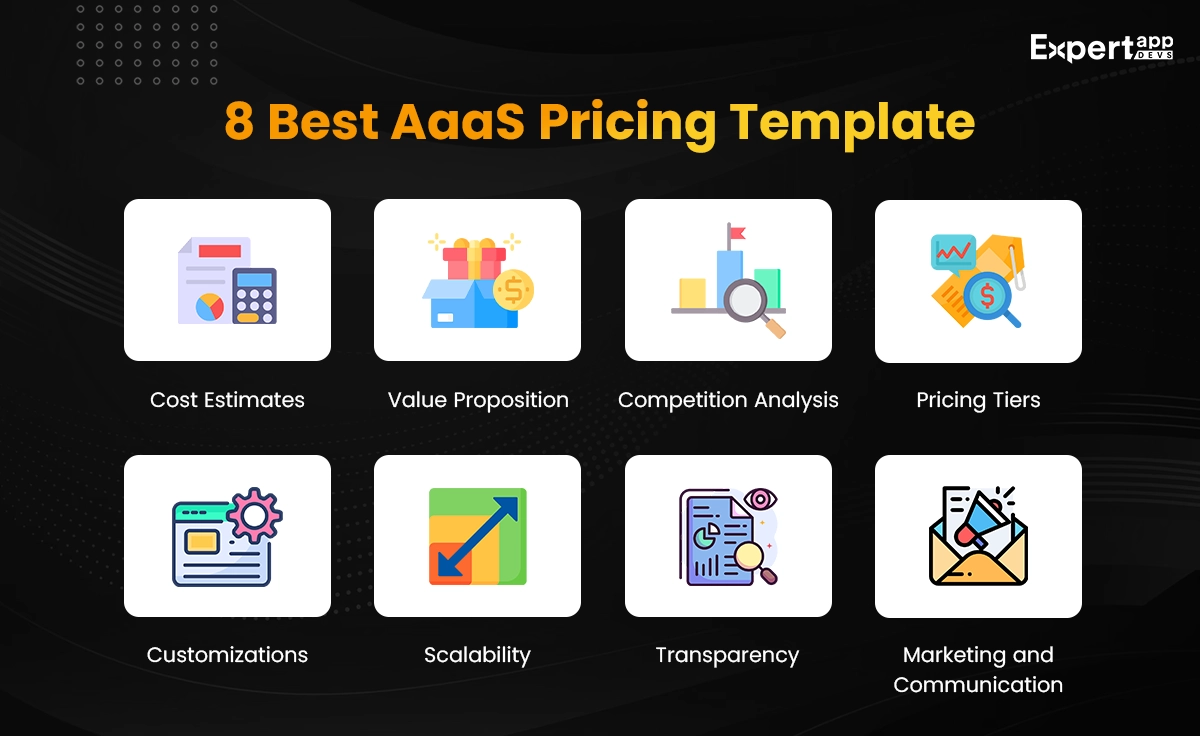
#1. Cost Estimates
Know the costs involved in developing AaaS. This includes infrastructure development and maintenance. This would help you ensure a good start to defining the pricing model.
#2. Value Proposition
You must collect the value proposition for the AaaS. While doing this, you must look at the benefits and outcomes of these offers. This would help you plan the pricing model.
#3. Competition Analysis
Analyzing and assessing the competition is equally important when planning the AaaS pricing. You must understand the market position and how the competition views the applications.
#4. Pricing Tiers
You must define the pricing tiers according to service and features. You must also record the usage while planning the pricing models for your application.
#5. Customizations
You must look for opportunities to customize the pricing. You can also use the packaging options that can help you bundle together the features close to the customer.
#6. Scalability
It is equally important for the application to evolve with the customer’s requirements. you must ensure that the app is ready to scale with the newer needs posed by your customers.
#7. Transparency
You must clearly communicate the pricing structure, terms and additional fees while defining the pricing model.
#8. Marketing and Communication
You should have an effective plan to promote the pricing model. This should be in sync with the demand and value proposition of the application.
Best Practices for Effective Template
You must use an effective template to plan the pricing model and maximize efficiency. Here are all the best practices to deliver a good pricing template.
- The idea is to keep the whole template simple. You must use language that is clear for others to understand. Moreover, you must avoid using jargon and complex language that can pose as a hindrance.
- When you are creating a template, make it useful and usable. You should consider your target audience and their challenges to define the pricing template. You must make it relevant by illustrating the ways to use it. at the same time, use standard formats to create the template.
- It is important to follow a structured format with clear headings to create the template. Make sure the information is easy to locate while creating the navigation. You can use bullets and tables to create the best pricing template.
- Add the right methods that can make your template flexible and customizable. You must include the information that can help the template adapt to the evolving user needs.
- Detailed coverage of all aspects including the process, considerations and actionable steps are important. You must anticipate the issues and concerns while defining the template.
- It is crucial to validate the template and test it for all types of users. You must incorporate the feedback and keep iterating the template to make it usable and effective. You should implement the changes to meet the industry standards.
- You must include a clear instruction that can help the users guide through the template. They would know how to use the template and implement the best practices for creating the pricing model.
Advanced AaaS Pricing Strategies
There are some advanced pricing models as well that you can use. This goes beyond the pay-per-use and subscription model. Let’s discuss the top pricing strategies.
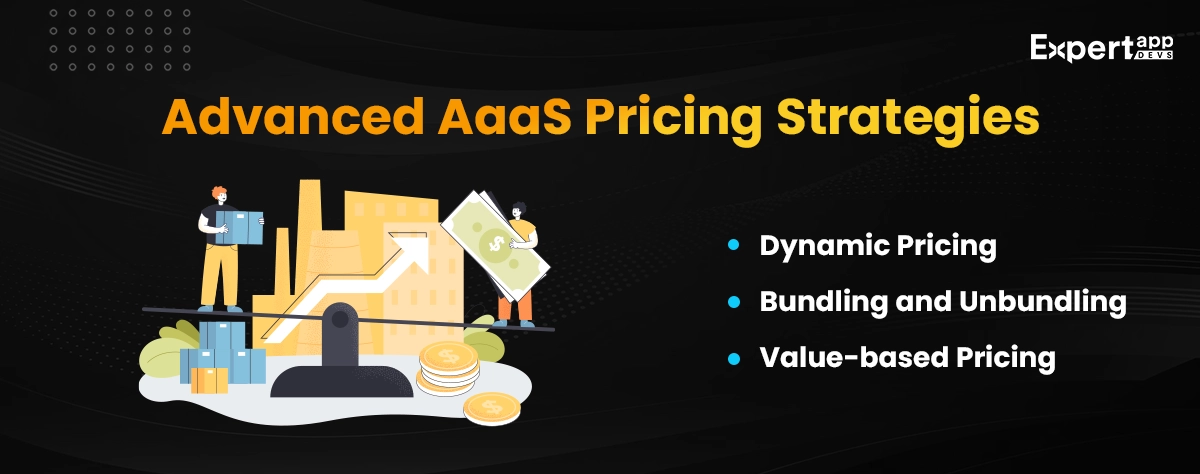
#1. Dynamic Pricing
You can use algorithms and data analytics that help you adjust the prices to match the fluctuating market. it can also help you align the pricing with market conditions and shift user mindsets. This can help you enhance the revenue and maximize the conversion opportunities.
#2. Bundling and Unbundling
This is another pricing strategy that you can use to increase conversions by offering custom features or offerings. This would allow users to purchase the solutions they need. Moreover, they can avoid adding the features they don’t need.
#3. Value-based Pricing
This is where you price the product to meet the perceptions of the users. You can conduct comprehensive research of the market to segment the customers and match their perceptions to define the pricing.
Real-World AaaS Pricing Examples
Here are two examples of AaaS pricing strategy.
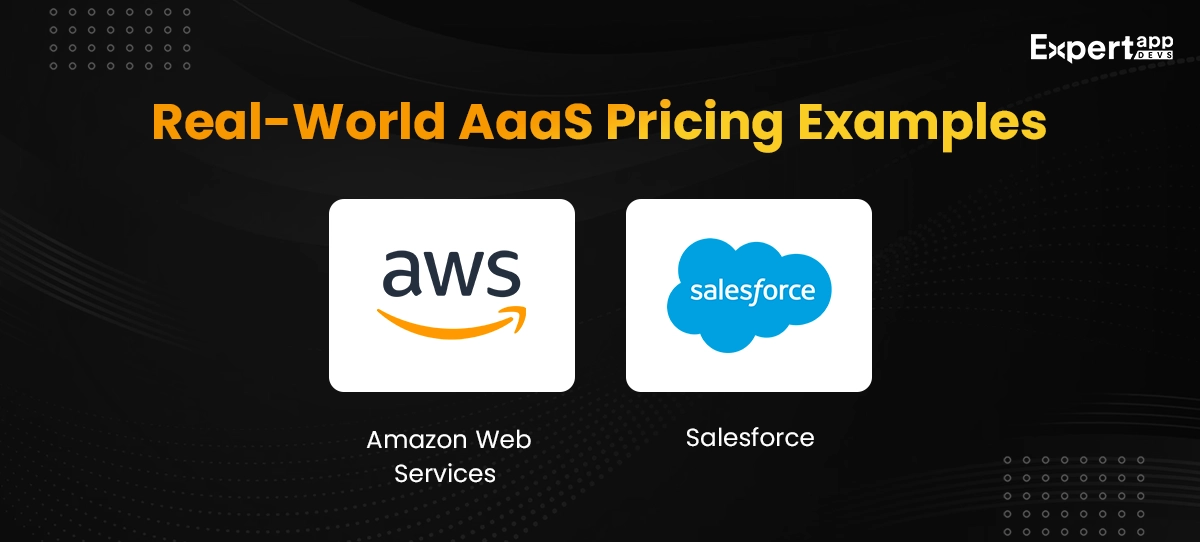
#1. Amazon Web Services
The AWS can offer a range of services, such as cloud computing and storage. The pricing model is pay-as-you-go where the customers would be billed for what they actually use.
They use tiered pricing and tend to offer high discounts to increase acquisitions and improve usage.
#2. Salesforce
They are a customer relationship management and marketing automation solution. they used the subscription pricing along with pricing tiers to customize the solutions.
They tend to extend customizations that come with additional fees. You can use customizations to align the application with your specific needs.
Conclusion
Application as a Service is gaining more traction owing to its flexibility and scalability. You must the pricing models that are most effective in your target market. For example, by adopting tiered pricing, AWS was able to capture a good share of their market. similarly, Salesforce used subscriptions to improve acquisitions and retention.
You must think through the rationale behind pricing, which includes behavior, spending patterns and performance. You must conduct a cost-benefit analysis before proceeding with the strategy you have in mind.
Your pricing should evolve with the shifts in the market. you must continuously monitor the industry trends and competition for an accurate pricing strategy.
Make sure you stay relevant, and competitive while adding value to your customers to stay competitive. To exploit the potential of AaaS and ensure the right pricing strategy, you can collaborate with Expert App Devs. We have a complete understanding of the development and delivery of AaaS and the ways to market it to maximize conversions.
 Jignen Pandya
Jignen Pandya
